Example Solved Problem | Mathematics - Properties of Multiplication of Matrix | 10th Mathematics : UNIT 3 : Algebra
Chapter: 10th Mathematics : UNIT 3 : Algebra
Properties of Multiplication of Matrix
Multiplication of Matrices
To multiply two matrices, the number of columns in the first
matrix must be equal to the number of rows in the second matrix. Consider the
multiplications of 3×3 and 3×2 matrices.
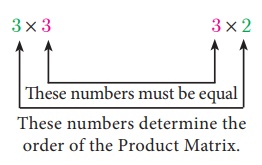

Matrices are multiplied by multiplying the elements in a row of
the first matrix by the elements in a column of the second matrix, and adding
the results
For example, product of matrices

The product AB can be found if the number of columns of matrix
A is equal to the number of rows of matrix B. If the order of
matrix A is m ×n and B is n × p then
the order of AB is m × p
Properties of Multiplication of Matrix
(a) Matrix multiplication is not commutative in general
If A is of order m ×n and B of the
order n × p then AB is defined but BA is not
defined. Even if AB and BA are both defined, it is not necessary
that they are equal. In general AB ≠ BA.
(b) Matrix multiplication is distributive over matrix addition
(i) If A, B,
C are m ×n , n × p and
n × p matrices respectively then A(B + C)
= AB + AC (Right Distributive Property)
(ii) If A, B, C are m
×n , m ×n and n × p
matrices respectively then(A + B)C = AC + BC
(Left Distributive Property)
(c) Matrix multiplication is always associative
If A, B, C are m × n , n × p
and p ×q matrices respectively then (AB)C = A(BC)
(d) Multiplication of a matrix by a unit matrix
If A is a square matrix of order n ×n and I
is the unit matrix of same order then AI = IA = A .
Note
·
If x and y are two
real numbers such that xy = 0 then either
x = 0 or y = 0 .
But this condition may not be true with respect to two matrices.
·
AB = 0 does not necessarily imply that A
= 0 or B = 0 or both A,
B = 0
Illustration

Example 3.64
If  , find AB.
, find AB.
Solution
We observe that A is a 2 ×3 matrix and B is a 3×3 matrix, hence AB is defined and it will be of the
order 2 × 3.
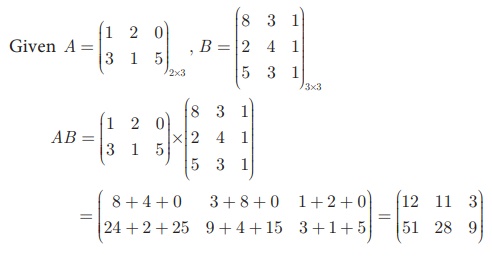
Example 3.65
If  find AB
and BA. Check if AB = BA.
find AB
and BA. Check if AB = BA.
Solution
We observe that A is a 2 ×2 matrix and B is a 2 ×2 matrix, hence AB is defined and it will be of the
order 2 ×2 .

Therefore, AB ≠ BA.
Example 3.66

Show that A and B satisfy commutative property with
respect to matrix multiplication.
Solution
We have to show that AB = BA

Hence LHS = RHS (ie) AB = BA
Example 3.67
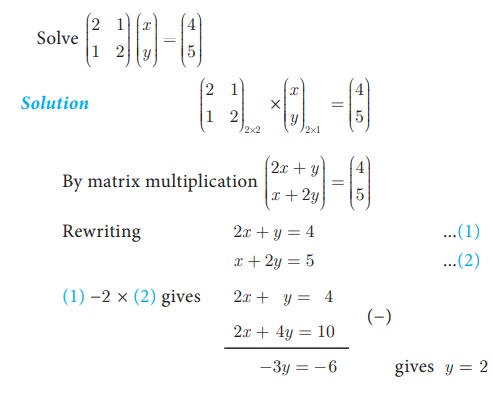
Substituting y = 2 in (1), 2x + 2 = 4 gives x = 1
Therefore, x = 1 , y = 2 .
Note
·
If A and B are any two non zero matrices, then (A
+ B)2 ≠ A2 + 2AB + B2.
·
However if AB = BA then
(A + B)2 = A2 + 2AB
+ B2
Example 3.68

show that (AB)C = A(BC) .
Solution
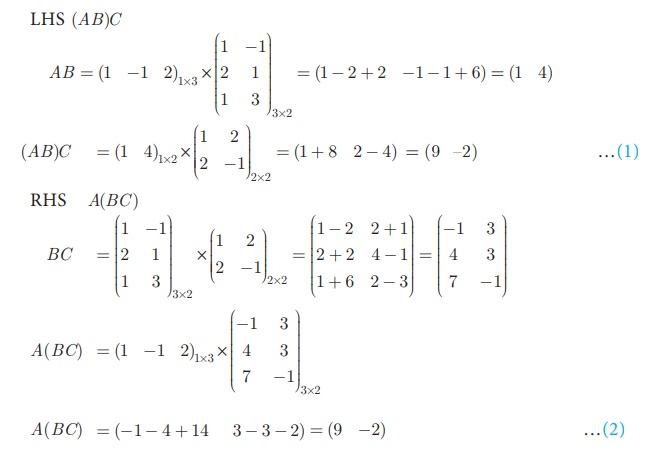
A(BC) = (−1 − 4 +
14 3 − 3 − 2) =(9−2) …(2)
From (1) and (2), (AB)C = A(BC) .
Example 3.69
If  verify that A(B + C) = AB + AC.
verify that A(B + C) = AB + AC.
Solution
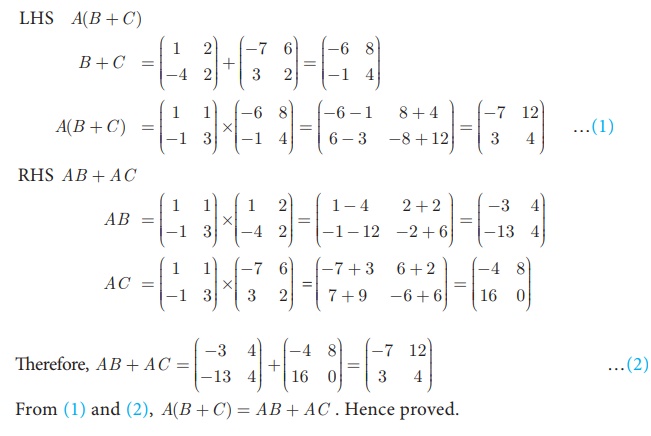
Example 3.70
If  show that (AB)T = BTAT
show that (AB)T = BTAT
Solution
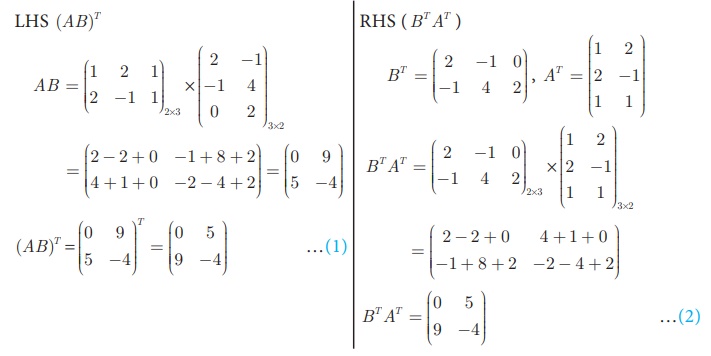
From (1) and (2),(AB)T = B T AT
.
Hence proved.
Related Topics